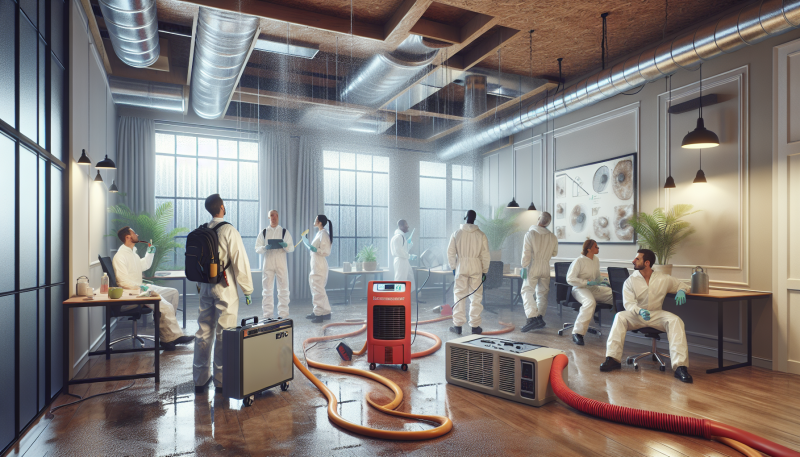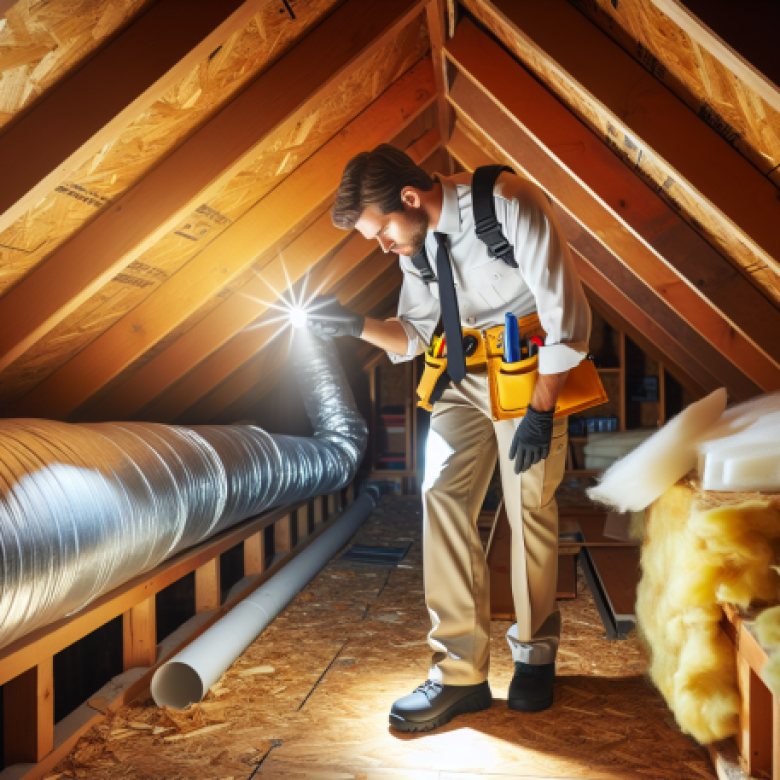In the realm of property restoration, effective dehumidification plays a crucial role in mitigating damage and ensuring a successful recovery process. At Projekt Property Restoration, we understand that water damage can lead to a host of complications, including mold growth and structural issues. With over 16 years of experience in commercial and residential restoration, our fully licensed and insured team is dedicated to providing top-notch services that prioritize your property’s health and safety. Located in Aventura, FL, we offer a comprehensive range of restoration solutions, including water damage restoration, mold remediation, and, importantly, dehumidification. Our state-of-the-art equipment and expert technicians work diligently to restore your property to its pre-loss condition, emphasizing the importance of maintaining optimal humidity levels during the restoration process. Whether you’re dealing with the aftermath of a flood or a fire, understanding the role of dehumidification can significantly impact the effectiveness of your restoration efforts. Trust Projekt Property Restoration to guide you through every step, ensuring prompt and affordable solutions tailored to your needs. For immediate assistance, reach out to us at 1-855-933-7935 or via email at Claims@ProjektFL.com.
Understanding the Science Behind Dehumidification
Dehumidification plays a crucial role in effective restoration, particularly in environments affected by excess moisture. Understanding the science behind dehumidification involves delving into the principles of humidity, moisture control, and the technologies employed to reduce humidity levels in various settings.
Humidity is the amount of water vapor present in the air, and it can significantly impact both the comfort and health of indoor environments. High humidity levels can lead to a range of problems, including mold growth, structural damage, and an increase in allergens. According to the Environmental Protection Agency (EPA), indoor humidity levels should ideally be kept between 30% and 50% to maintain a healthy environment. When humidity levels exceed this range, dehumidification becomes essential.
The science of dehumidification is based on the principles of condensation and adsorption. There are two primary methods of dehumidification: refrigerant dehumidification and desiccant dehumidification.
-
Refrigerant Dehumidification: This method utilizes a refrigeration cycle to cool air, causing moisture to condense on cold surfaces. The process involves the following steps:
- Air is drawn into the dehumidifier and passed over cold evaporator coils.
- As the air cools, its capacity to hold moisture decreases, leading to condensation on the coils.
- The condensed water is collected in a reservoir or drained away, while the drier air is reheated and released back into the environment.
-
Desiccant Dehumidification: This method employs materials that absorb moisture from the air. Desiccants are hygroscopic substances that attract and hold water vapor. The process typically involves:
- Air passing through a desiccant material, which absorbs moisture.
- The desiccant is then heated to release the absorbed moisture, allowing it to be vented outside.
- This cycle can be repeated, making desiccant dehumidifiers effective in low-temperature environments where refrigerant dehumidifiers may struggle.
Both methods have their applications, and the choice between them often depends on the specific conditions of the environment being restored. For instance, in areas with severe water damage, such as after a flood, a refrigerant dehumidifier may be more effective due to its ability to handle large volumes of moisture quickly. In contrast, desiccant dehumidifiers are often used in industrial applications or in colder climates where traditional methods may not be as efficient.
The effectiveness of dehumidification can be quantified using the concept of the dew point, which is the temperature at which air becomes saturated with moisture and water begins to condense. By lowering the dew point through dehumidification, restoration professionals can prevent mold growth and structural damage. According to the CDC, mold can begin to grow within 24 to 48 hours in damp conditions, making timely dehumidification critical in restoration efforts.
In addition to preventing mold, effective dehumidification can also improve indoor air quality. High humidity levels can exacerbate respiratory issues and allergies, as they create an environment conducive to dust mites and other allergens. By maintaining optimal humidity levels, dehumidification contributes to a healthier living environment.
Moreover, the energy efficiency of dehumidification systems has improved significantly over the years. Modern dehumidifiers are designed to consume less energy while providing effective moisture control. This is particularly important in restoration scenarios where prolonged operation of dehumidification equipment is necessary.
In conclusion, understanding the science behind dehumidification is essential for effective restoration. By employing the right dehumidification methods, restoration professionals can mitigate the risks associated with high humidity, including mold growth and structural damage. For those facing water damage or mold issues, seeking professional assistance can ensure that the dehumidification process is carried out effectively. For more information on dehumidification and its role in restoration, you can visit our dehumidification page or contact us for expert advice at our contact page.
For further reading, consider these resources:
- EPA on Mold and Moisture Control
- CDC on Dampness and Health
- Energy.gov on Dehumidifiers
By understanding the principles of dehumidification, individuals and professionals can take proactive steps to protect their properties and health from the adverse effects of excess moisture.
Key Benefits of Dehumidification in Restoration Processes
Dehumidification plays a crucial role in restoration processes, particularly in scenarios involving water damage, mold growth, and other moisture-related issues. One of the primary benefits of dehumidification is its ability to accelerate the drying process in affected areas. When water damage occurs, whether from flooding, leaks, or other sources, excess moisture can linger in the air and within building materials. This prolonged moisture can lead to structural damage, promote mold growth, and create an unhealthy indoor environment. By effectively reducing humidity levels, dehumidifiers help to dry out walls, floors, and furnishings more quickly, minimizing the risk of secondary damage.
Another significant advantage of dehumidification is its role in preventing mold growth. Mold thrives in damp environments, and even a small amount of moisture can lead to significant mold issues if not addressed promptly. By maintaining optimal humidity levels, dehumidification inhibits the conditions that allow mold spores to germinate and proliferate. This is particularly important in restoration projects where mold assessment and remediation are necessary. Implementing dehumidification as part of the restoration process not only protects the property but also ensures the health and safety of its occupants.
Additionally, dehumidification contributes to improved air quality. High humidity levels can lead to the growth of dust mites, bacteria, and other allergens, which can adversely affect indoor air quality. By controlling humidity, dehumidifiers help create a healthier living environment, reducing the risk of respiratory issues and other health problems associated with poor air quality. This is especially beneficial in homes and commercial spaces where occupants may have allergies or respiratory conditions.
Furthermore, dehumidification can enhance the efficiency of other restoration efforts. For instance, when combined with infrared thermal imaging, restoration professionals can identify hidden moisture pockets that may not be visible to the naked eye. This targeted approach allows for more effective drying and restoration, ensuring that all affected areas are addressed. The synergy between dehumidification and advanced diagnostic tools leads to a more thorough restoration process, ultimately saving time and resources.
In terms of cost-effectiveness, utilizing dehumidification during restoration can lead to significant savings. By preventing mold growth and structural damage, property owners can avoid costly repairs and extensive remediation efforts down the line. Moreover, efficient drying processes can reduce the overall duration of restoration projects, minimizing disruption to daily life or business operations. For those interested in understanding the financial implications of restoration services, tools such as a cost calculator can provide valuable insights.
In conclusion, the benefits of dehumidification in restoration processes are manifold. From accelerating drying times and preventing mold growth to improving air quality and enhancing overall restoration efficiency, dehumidification is an essential component of effective restoration strategies. Property owners and restoration professionals alike should recognize the importance of maintaining optimal humidity levels to protect both the structure and the health of its occupants. For more information on how dehumidification can assist in your restoration needs, consider reaching out through our contact page or explore our specialized services in Sunrise restorations.
In conclusion, dehumidification plays a crucial role in the restoration process, particularly in environments affected by water damage, mold growth, or high humidity levels. By effectively reducing moisture in the air and materials, dehumidifiers not only accelerate the drying process but also help prevent the long-term consequences of excess humidity, such as structural damage and health risks associated with mold and mildew. Understanding the importance of dehumidification allows homeowners and restoration professionals alike to take proactive measures in safeguarding their properties. Investing in proper dehumidification techniques and equipment is essential for achieving successful restoration outcomes, ensuring a safe and healthy living environment. As we continue to face challenges related to climate change and extreme weather events, the role of dehumidification in effective restoration will only become more significant, making it an indispensable component of any comprehensive restoration strategy.





